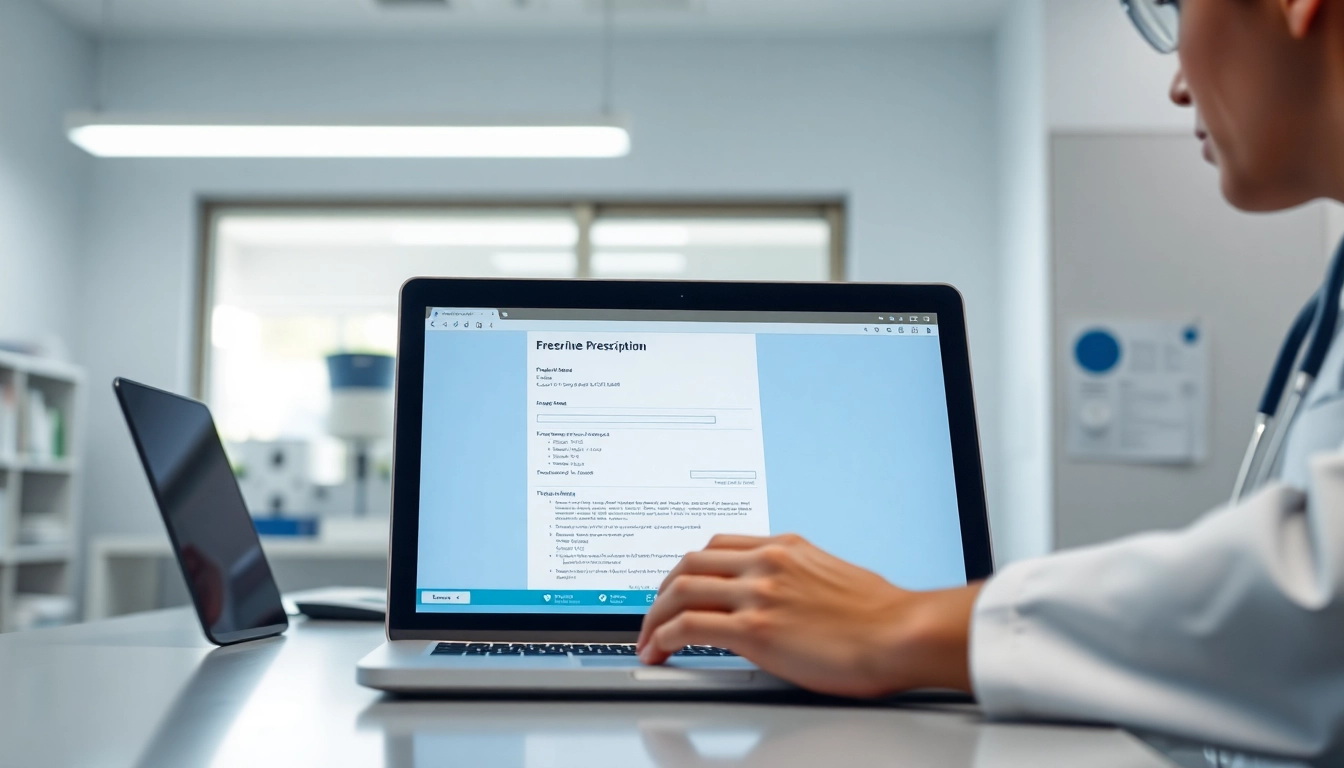Introduction to Top Eprescribing Solutions
In an era where technology and healthcare intersect, the implementation of top eprescribing solutions has transformed how prescriptions are managed in medical practice. These solutions allow healthcare providers to create, manage, and send prescriptions electronically, which significantly improves the prescribing process’s efficiency and accuracy. Understanding the intricacies of these solutions is essential for modern healthcare systems aiming to enhance patient care and streamline administrative processes.
What is Eprescribing?
Eprescribing, or electronic prescribing, is the process of electronically communicating a prescription from a healthcare provider to a pharmacy. This is achieved through secure software platforms that replace traditional paper prescription pads. Eprescribing systems integrate patient information and medication data, allowing for seamless and immediate transmission of prescription details.
Importance of Eprescribing in Healthcare
The importance of eprescribing cannot be overstated. By eliminating paper-based prescriptions, healthcare providers can reduce errors due to illegible handwriting or incorrect dosage instructions. Eprescribing software can also facilitate real-time checks for medication interactions and allergies, ensuring improved patient safety. Moreover, it streamlines workflows for healthcare providers, enabling them to dedicate more time to patient care rather than paperwork.
Overview of Key Features
When exploring top eprescribing solutions, it is vital to understand the key features that contribute to their effectiveness. Features may include integration with electronic health records (EHR), support for multiple medication types, cost-effectiveness, and user-friendly interfaces. These capabilities help practices operate more efficiently while enhancing patient outcomes.
Benefits of Top Eprescribing Solutions
Improved Efficiency and Accuracy
One of the primary benefits of top eprescribing solutions is the significant improvement in efficiency and accuracy they offer. By digitizing the prescription process, healthcare providers can avoid the lengthy procedures associated with paper prescriptions. Electronic systems allow for rapid entry and transmission of prescriptions, significantly reducing the time required for prescription fulfillment.
Patient Safety and Medication Management
Eprescribing enhances patient safety by providing healthcare professionals with access to a comprehensive medication list and relevant patient history. This capability allows for rigorous checks for potential drug interactions and allergies. By ensuring that prescribed medications are safe and appropriate for each patient, eprescribing contributes to better medication management and adherence to treatment plans.
Cost-Effectiveness for Practices
Implementing an eprescribing system can lead to considerable cost savings for medical practices. The reduction in paperwork, improved pharmacy efficiency, and better medication management contribute to lower operational costs. Furthermore, as practices become more efficient, they can also enhance their revenue potential by seeing a greater number of patients without compromising care quality.
Key Features to Look For
Integration with Electronic Health Records
Integration with EHR is a crucial feature of top eprescribing solutions. This capability allows for seamless information sharing between the prescribing system and the electronic health record, ensuring that patient information is always up-to-date. This feature not only enhances the accuracy of prescriptions but also improves the overall efficiency of healthcare delivery.
Regulatory Compliance and Security Features
Given the sensitivity of patient data, regulatory compliance and security features are non-negotiable when selecting an eprescribing solution. Top-tier solutions ensure that they comply with industry standards such as HIPAA and other relevant regulations. Additionally, robust security protocols protect against unauthorized access and data breaches, thereby safeguarding patient information.
User-Friendly Interfaces and Support
User experience plays a fundamental role in the effectiveness of any software solution. Top eprescribing systems feature intuitive interfaces that facilitate ease of use, reducing the learning curve for healthcare professionals. Moreover, comprehensive customer support, including training resources and technical assistance, ensures that practices can fully leverage their eprescribing capabilities.
Comparing the Leading Solutions
Market Leaders in Eprescribing Solutions
As the market for eprescribing solutions grows, several key players have distinguished themselves as leaders in functionality and reliability. Each of these solutions has its unique advantages, catering to different aspects of prescription management. Understanding the strengths and weaknesses of each can help healthcare providers choose the solution that best fits their needs.
Feature Comparison and Pricing
When selecting an eprescribing solution, it is crucial to compare features and pricing models. Pricing can vary widely, and while some systems operate on a subscription basis, others may charge per prescription. Key features to consider include the ability to handle controlled substances, integrations with pharmacy networks, and dashboards for tracking prescription metrics. Evaluating these aspects against your practice’s specific requirements will lead to a more informed decision.
User Reviews and Feedback
User reviews and feedback can provide invaluable insights into the practical application of eprescribing solutions. Engaging with testimonials and user experiences allows prospective users to gauge the effectiveness of a system in real-world settings. Not only do these reviews highlight the strengths and weaknesses of a particular solution, but they also offer suggestions for maximizing its use within a practice.
Implementation and Best Practices
Steps for Effective Implementation
Implementing an eprescribing system necessitates a structured approach to ensure a smooth transition. Begin by assessing the practice’s current workflows and prescribing processes. Following this analysis, select a vendor that meets the identified needs. After choosing a solution, plan the implementation in phases, beginning with pilot testing in select areas before rolling out across the practice. This iterative approach reduces risks and allows for adjustments based on feedback.
Training Staff and Stakeholders
A key component of successful eprescribing implementation is comprehensive training for all users, including healthcare providers, administrative staff, and pharmacy personnel. Training should cover system navigation, best practices for prescribing safety, and troubleshooting common issues. Involving stakeholders from different areas of the practice can create a more cohesive training experience and facilitate greater buy-in during the implementation process.
Monitoring Performance and Outcomes
After the system is in place, continuous monitoring of its performance and impact is essential. Establish metrics for success, such as prescription turn-around time, error rates, and user satisfaction. Regularly reviewing these metrics can help identify areas for improvement and ensure that the eprescribing solution delivers the anticipated benefits. Moreover, seeking ongoing feedback from users can drive the refinement of processes and further enhance system efficacy.



